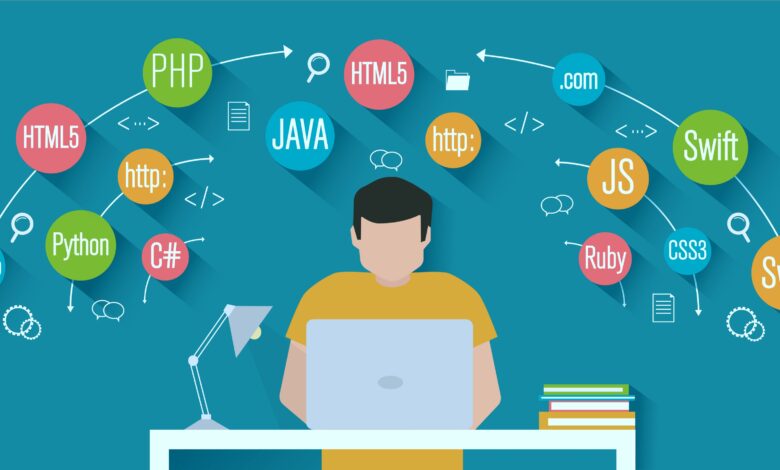Top programming languages for Computer Science Engineers

Programming languages are special instructions given to computers to tell them what to do. Not that long ago, highly skilled computer programmers were a rare breed because not that many people could carry out software coding or even actually needed to do so. But that is not the case today as most IT jobs require you to have a solid understanding of popular programming languages. A B.Tech. Computer Science Engineering degree from top engineering colleges in Thrissur or Palakkad like Nehru College of Engineering and Research Centre, or Jawaharlal College of Engineering and Technology helps you immensely no doubt. But it’s not just in the field of computer science – modern industries prefer engineering professionals who are literate in programming because the knowledge will not only be beneficial in solving computational and analytical problems, but will also improve your analytical and critical thinking, math and creativity.
You have successfully completed graduation from Computer Science Engineering colleges in Palakkad or Thrissur like NCERC or JCET, which fall under the umbrella of Nehru Group of Institutions, and that itself gives you a head start. But what if you have completed Mechanical Engineering from Nehru college and you want to switch your line of work completely? You will likely need to be proficient in a programming language. Numerous factors come into play when making a decision, like why you’re learning a new language in the first place, the level of difficulty you’re comfortable with, and the knowledge you already have that matches with your existing coding skills. In addition to software engineers and architects, numerous other disciplines require the use of software programming or computer coding at work, including energy engineering, mechanical engineering, electronics engineering, control system engineering, and more. An engineer is likely to face several issues in the workplace without a basic skill of programming language. With that in mind, let us take a look at the top programming languages that are in demand today. Of course, there are many programming languages but these are some of the most popular choices.
Python
This is among the most popular and easiest programming languages available today because of its simple syntax, readability, and the fact that it needs very less effort to write a program when compared to other languages. Free and open-source, Python offers extensive support modules and community development, easy web services integration, user-friendly data structures, and GUI-based desktop applications. It’s also used for scientific and computational applications like FreeCAD and Abacus, and to develop 2D imaging and 3D animation packages. Used by big companies like Facebook and Google for their software systems and platforms, Python is also preferred by data scientists, data engineers, artificial intelligence and machine learning experts.
Java
Yet another in-demand computer programming language, Java is robust, efficient, and very secure. Though Java is a complex language to learn, it is open source, fully object-oriented, and platform independent, meaning it can support most operating systems. As Java is portable across platforms, from smartphones to mainframe data centers, most gadgets and IoT devices use it. The language also finds use in web and application development, big data, and backend of several popular websites like Google, Amazon, Twitter, and YouTube. Some might argue that options like pointers and multiple inheritance are not available in Java, but the availability of open source libraries, dynamic capabilities, and multi-threading makes it superior to other languages.
C and C++
Perhaps the oldest and most commonly used programming language is C, which forms the basis for more modern languages like C#, Java, and JavaScript. As C is machine-independent, the coding made in one environment can be used in another without any changes, and it can also be broken down into different functions that will all run individually without any issues. The high-performance language is relatively fast, has a clean style, extensive libraries, and easy memory management, a good reason why it, along with C++, is widely used in developing applications where performance is a critical issue, such as client/server applications.
C++ is an upgraded version of C that eliminates many of the latter’s drawbacks including namespace feature and reference variables support. But the main advantage is that C++ supports both object oriented and procedural programming while C only supports the latter. Numerous OS, banking applications, compilers, browsers, and high-end graphic games use C++. While a lot of developers skip learning C and move on straight to C++, many prefer to learn C first as it provides a solid foundation for C++ development.
C#
The Microsoft-developed C# programming language reached its peak in the beginning of the 21st century for its role in supporting new-age (at the time) ideas of object-oriented programming. Among the powerful programming languages for the .NET framework, C# is more similar to C++ than Java is, and best suited Windows, Android, and iOS applications as it takes the help of the integrated development environment product, Microsoft Visual C++. Many popular websites like Bing, Dell, and Visual Studio use C# on the back end.
PHP
This open-source programming language is considered essential by many web developers simply because it’s used to build more than 80 percent of websites on the Internet, including popular ones like Facebook and Yahoo. Seen as a relatively easy language to learn for beginning developers, PHP is mainly used to write server-side scripts though skilled programmers can write command-line scripts and even develop desktop applications.
MATLAB
A proprietary programming language and computing environment, MATLAB is very useful for scientists and engineers who want to do numerical analysis, build machine learning and deep learning applications. Programs based on this language can help users to analyze data, create algorithms, process images, and verify research. Simple yet multi-faceted, MATLAB is relatively easy to learn but keep in mind that it’s mainly used for engineering calculations and simulation purposes.




